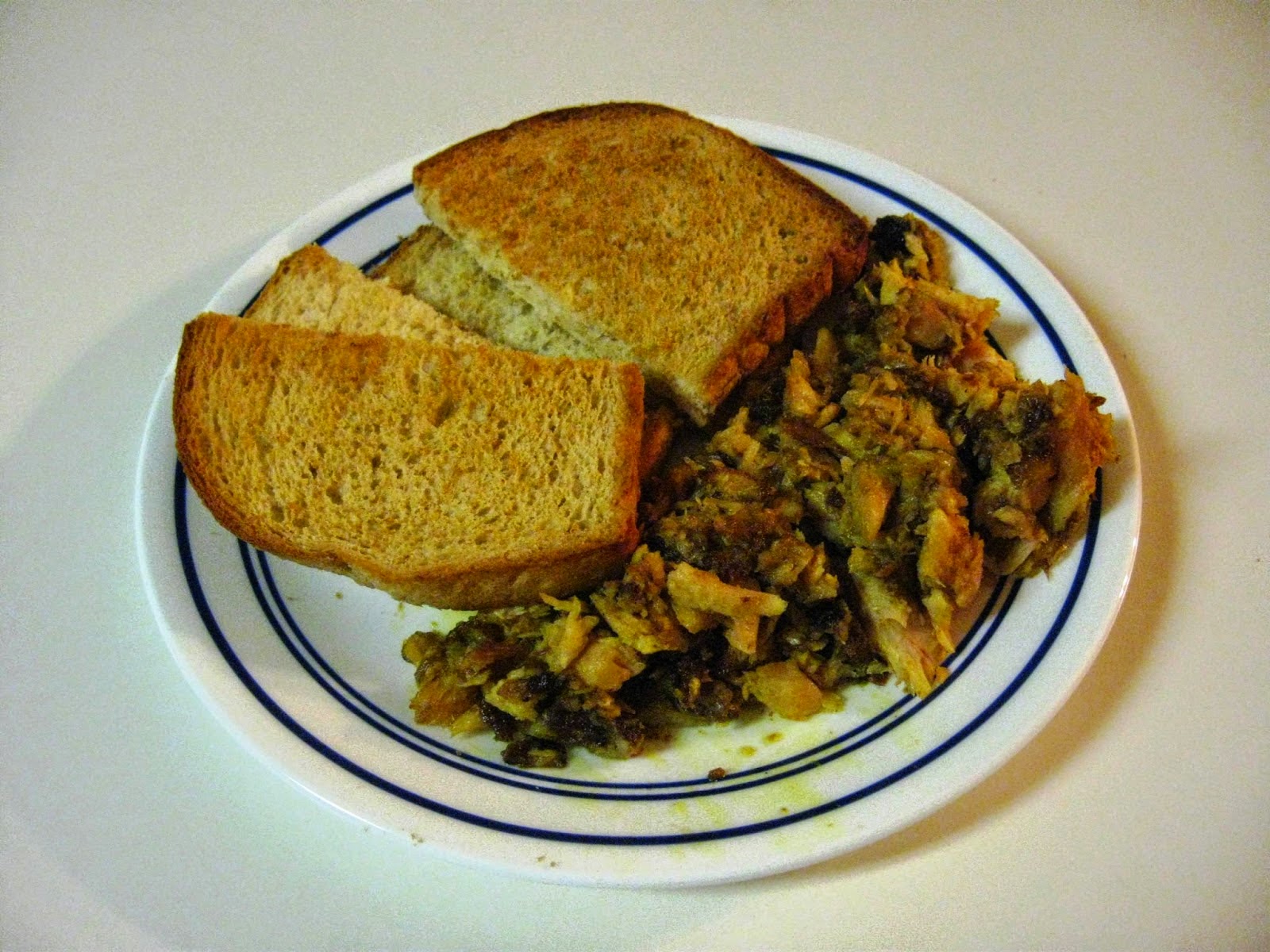As with every single challenge, I started this one with very good intentions. The challenge was just in time for an immersion event I was doing; making cakes in an 1820s log cabin would be the thing to take my Historical Food Fortnightly participation to the next level!
Well, it didn't happen. I found a cabin-worthy cake, but was so busy having an excellent time (and slumming it as a tavern maid) that I didn't get a chance to make the cakes.
When I got home (after some adventures too tedious to mention here) I decided to make the things I'd been planning on making anyway - pumpkin hoe cakes, from the Kentucky Housewife. Hoe cakes are a kind of fried cornmeal cake indigenous to the southern United States. I picked this recipe because it was simple and fast. It was also dated to the time in which our cabin was first built and occupied, and a similar location (our cabin having come from Tennessee) and it was very appealing to cook the same food that might have been cooked in the cabin when it was first occupied. It was also very seasonal - 'tis the season for pumpkin, after all.
The Challenge: Let Them Eat Cake!
The Recipe: Pumpkin Hoe Cakes, from The Kentucky Housewife by Lettice Bryan
The Date/Region: 1835/Kentucky
How Did You Make It: The recipe calls for 1 quart of cornmeal, and 1 pint of pumpkin. You mix this together, with enough milk to make a thin dough, and fry it on a griddle greased with lard or butter until browned. Serve hot with butter.
I surprisingly know a thing or two about working with cornmeal, and one of the things I know is that corn has no gluten. Cooks in the 19th century often used cornmeal in exactly the same ways as they would use wheat flour, but corn's lack of gluten makes cornmeal a very different creature.
When working with cornmeal, it is helpful to use hot (boiling) water and let it sit for about 20 minutes before working with it. This gives the best taste and makes the cornmeal more malleable (and less likely to crumble into bits, which was my big concern). So, despite there being no mention of this technique in the original recipe, I heated up the milk to scald it, mixed it in with the cornmeal until it was just moistened, and let it sit a spell.
After it sat, I mixed in the pumpkin. The texture was good, so I dropped it by very heaped tablespoons into the pan to fry. It took about 4 or 5 minutes on each side to fry up, and it was hard to tell when it was browned. A couple did fall apart, but most stuck together - victory!
Time to Complete: About a quarter of an hour from start to finish.
Total Cost: Under $5. I randomly have a superfluity of cornmeal, and a small can of pumpkin was less than $1
How Successful Was It: I was surprised at how much I liked them. They're good in the way that anything browned in butter, and then spread with more butter, is going to be good. They remind me a great deal of fried cornmeal mush (unsurprisingly) or cornmeal fritters. However, they are rather bland. I could see serving them with any mid-19th century condiment - apple butter, fruit preserves, honey, sorghum, molasses, maple syrup, or even spread with brown sugar. I ate them on the side of some carrot soup, which made for a very orange dinner, but they went together surprisingly well.
How Accurate Is It: Besides my liberties with the cornmeal and the milk, I used a can of pumpkin instead of stewing my own heirloom variety, and I am sure the corn is not heirloom either. Modern stove, etc etc etc.
 |
| They aren't very photogenic... |







